Species’ maintenance demands include chilled environment, high levels of water exchange

Salinity is one of the most relevant environmental parameters influencing fish physiology, food intake and growth performance. Temperature is the other primary environmental factor affecting growth and protein synthesis in ectothermic fish.
The Middle East is characterized by extreme temperature and salinity, which constantly affect aquaculture hatchery and grow-out systems. Due to the region’s relatively mild winters, the short grow-out period for farmed animals to attain commercial size in the Middle East has attracted investors interested in raising sea bass and other species.
European sea bass
European sea bass is an active euryhaline teleost species that migrates and forages in Mediterranean waters of widely differing salinities. European sea bream (Sparus aurata) and sea bass (Dicentrarchus labrax) were introduced in Kuwait as early as 2000. Their larvae were adapted to desert geothermic saline subsoil water.
In their research with sea bass in the Middle East, the authors have identified important elements of larval rearing and system design for the species.
Larval rearing
Early sea bass larvae need low temperatures at stocking of 15.0 to 15.5 degrees-C. Temperature control is crucial for egg hatching and normal metabolic utilization of yolk reserves. As ambient seawater is 42 ppt, salinity reduction to 35 ppt in larval tanks needs separately chilled freshwater. The authors’ system design involves insulation of polyvinyl chloride piping with felt to minimize water temperature loss.
Seabass prefer black vertical tank surfaces and white tank bottoms. Tanks should be disinfected with iodine, thoroughly rinsed with freshwater and dried before filling. The tanks should be aerated with drop-line tubing, with lead weights but without air-diffuser stones, assuring vertically rising whole air cells after filling.
Each circular tank of about 5 cubic meters in volume should have at least four or five points of aeration. The central bottom aeration collar should be checked to confirm evenness of fractionated bubble volume. Microfractionated bubbles have higher surface tension and can adhere to the larvae, hindering free motility.
Both central and surface filters should have a mesh of 200 µ. Mild aeration around the central filter provides gentle but uniform aeration that avoids hydrodynamic physical stress to larvae. To degas the incoming water, the authors use a degassing bucket with a circular porous tube diffuser that provides a continuous uprising of fractionated bubbles, which helps to adhere the microalveolar air spheres and burst them at the bucket surface.
The larval-rearing tanks should be kept in total darkness. This lessens the growth of hypersaline photosynthetic bacteria and incapacitates any possible microbionts like wild hypnozygotes, dinoflagellate spores and fungal hyphae that accidentally gain entry to the larviculture system.
Stocking protocols
Sea bass are best stocked at 100-150/L as newly hatched larvae instead of eggs, as the latter are sensitive to transport stress. The larvae must be transported in plastic bags with activated charcoal and oxygen inputs on filling. Temperature should be 15.0 to 15.5 degrees-C, and salinity should be 33 to 34 ppt. Light intensity should be 300 lux when larvae show eye pigmentation and 800 lux at mouth opening.
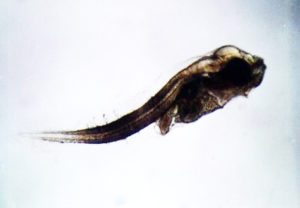
Mouth opening commences on day 4 at 15.0 to 15.5 degrees-C. Higher temperatures accelerate mouth opening but inhibit the formation of internal organs. Algae and then rotifers are added to tanks at the time of mouth opening. Isochrysis and batch mode-grown Nannochloropsis gaditana microalgae are added at a 1:1 ratio to provide highly unsaturated fatty acids to the larvae and as enrichment for rotifers. Daily lighting should be 18 hours of light and six hours of darkness.
Microbially matured water that has a high diversity of algal bacterial flora dominated by non-opportunistic flora is believed to be a stable buffering system. Rotifers are fed four times daily after exclusive enrichment at 30 degrees-C. At the very beginning of trophic life (day 5 to day 9), when the vitellus is almost totally consumed, larvae have limited capacity for digestion and adsorption. Hence, live feeds should not be enriched with high lipids from off-the-shelf diets, and overfeeding should definitely be avoided.
Swim bladders start forming in sea bass from day 7 until day 12. The central aeration collars in the larval-rearing tanks are turned off on the 11th day to impede horizontal water surface flow and improve swim bladder inflation rates. The surface and bottom water current velocities in rearing tanks should be considered together with the improving swimming ability of the fish to assess daily water-exchange rates.
An optimum temperature for sea bass at this stage is 20 to 21 degrees-C. This is a critical point in the rearing of sea bass during which high mortalities are expected.
First feeding
On day 15 comes the first feeding of just-hatched artemia, which must have the anterior knoblike salt gland. From this point, daily lighting can be 16 hours of light and eight hours of darkness. Artemia quantities are increased over four daily feedings based on demand.
On day 16, tank thinning is done. The temperature in the tanks receiving the larvae should be within 0.5 degrees-C of the temperature of the tanks of origin. On day 17, the larvae are given a formalin bath at 25 ppm, followed in eight hours by an antibacterial bath. After the treatment, the volume of the rotifer diet should be increased per feeding with the third feeding eliminated.
Daily first feedings always include natural antibiotics such as algae-enriched rotifers and successive feedings with docosahexaenoic acid-enriched rotifers. The introduction of probiotic algal bacteria promotes fish body defenses and works with gut flora against high-saline pathogenic bacteria.
Weaning, metamorphosis
After a formalin bath to clean their gills, the larvae behave much better. Rotifer volume is increased over 30 million per feeding and then completely stopped on day 19. The algae input is also stopped at this time. On day 23, the larvae are big enough to be weaned to a good powder feed with a diameter of 100 to 200 µ.
While feeding, regular observations of the larvae and their artemia consumption should be done. The dry feed size changes as the fish grow older. Bottom siphoning of tanks should be done daily after initiating dry feed.
The second formalin bath is typically given on day 24. By day 27, the filter mesh is changed to 300 µ or larger to allow free exit of dissolved debris and suspended particulates. At this time, photoperiod is 12 hours of light and 12 hours of darkness, after the arrest of algae.
On days 32 to 35, the water level is lowered and larvae are picked up gently by beaker and transferred into 22-m3 tanks. The larvae start to metamorphose into fish around day 55 and generally complete the metamorphosis stage by day 60. Mortalities often occur because of stress. The addition of pinches of fine-grain salt to the powder feed is recommended to help accelerate the gut evacuation of European sea bass juveniles from day 60 until day 95 in outdoor nursery tanks.
Stress events
Mortalities occur especially on critical days such as swim-bladder formation or first weaning. Thinning the tanks is crucial to avoid tank crashes. Sea bass fingerlings by nature are very sensitive, and harsh handling during grading leads to stress, making them swim on the surface and get sick. Harsh handling can cause mortalities that continue for 10 days to two weeks, during which more than 70 percent of the fish can be lost. Treatments with legally approved antibiotics help to reduce the problem. To prevent high mortalities, the fish should be anesthetized when they are graded or transferred.
Always handle sea bass fingerlings with extra care, for it will improve final production. Although grading is done to minimize cannibalism and establish a uniform size of the fish to be sold, it is advisable to minimize the grading frequency. The losses that occur after handling the fish will likely be much higher than the fish lost to cannibalism.
After their first transfer to larger tanks, fish may have to be moved again after 15 to 20 days because of their rising biomass. Just splitting the tanks into two or three compartments and avoiding grading or counting the fish minimizes stress. Grading is better handled when the fish are older, stronger and more able to handle stress.
Perspectives
Under favorable temperatures and adequate feeding, sea bass quickly grow from a 1 gram stocking size to market size in 85 to 95 days with overall survival of 20 to 30 percent. The fingerlings have to be nursed to ensure metabolic sufficiency at 42 ppt salinity.
Hypoxia and oscillating oxygen conditions in fish-crowding zones must be detected and thinning performed. Feeding of sardine oil-enriched adult artemia before tank transfers helps to relieve stress mortalities. Temperature-dependent shifts in oxygen requirements and available dissolved oxygen are critical factors for nursery management at 42 ppt.
Overall, European sea bass show somewhat demanding maintenance requirements for a chilled environment and high levels of water exchange. Incremental swimming speed and social interaction are the prime indicators of metabolic status and growth. Although sea bass juveniles have a low saline preference, juveniles can be reared indoors with a hyperosmotic media of 42 ppt.
(Editor’s Note: This article was originally published in the March/April 2013 print edition of the Global Aquaculture Advocate.)
Authors
-
M.R. Kitto, Ph.D.
Assistant Professor
Faculty of Marine Science
King Abdulaziz University
Jeddah, Saudi Arabia -
Tagged With
Related Posts
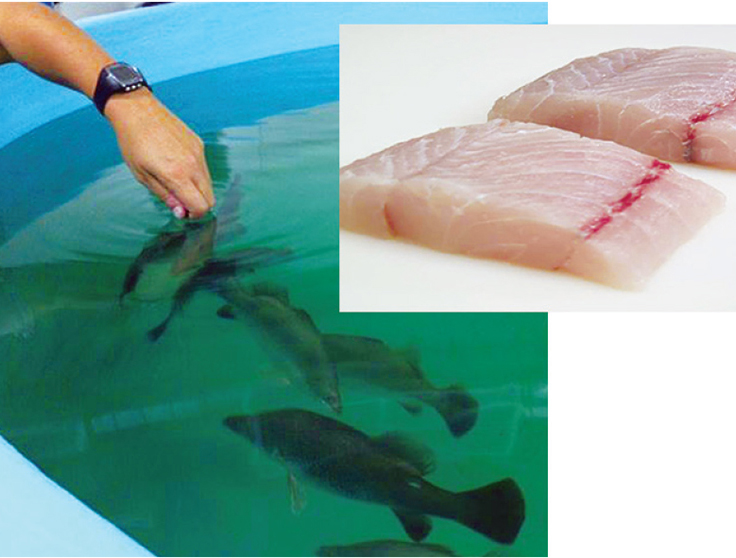
Intelligence
Adding flavor complexity to farmed barramundi
Organoleptic attributes such as flavor and aroma are among the most important factors that influence consumer acceptability and demand for fish products. Consumers have identified farmed fish as less complex and lacking “sealike” or “sea-fresh” flavors and aromas.
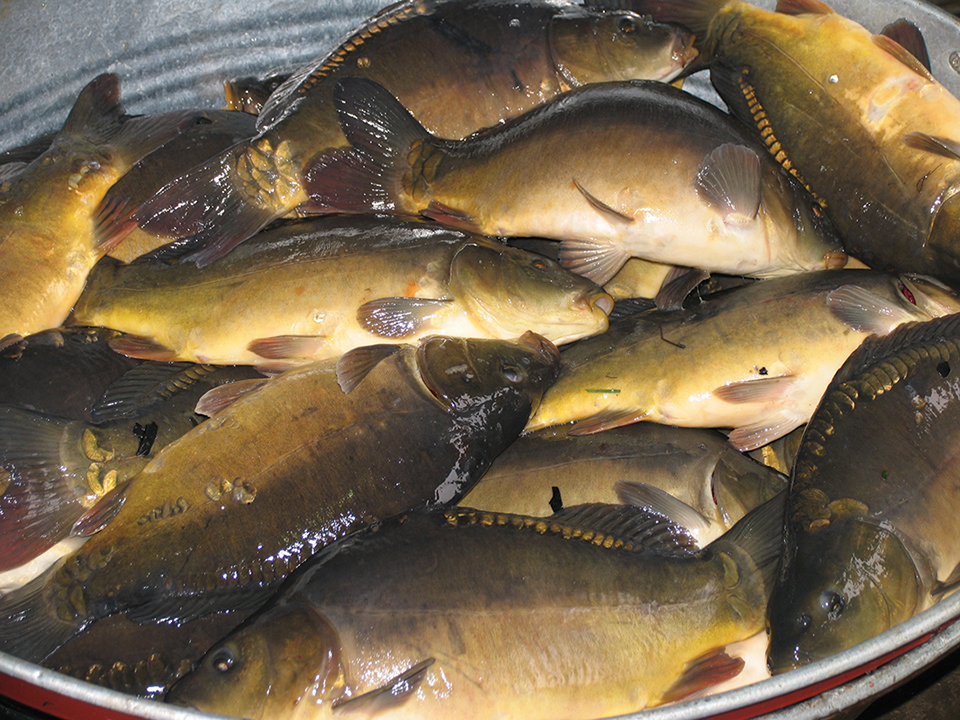
Health & Welfare
Cathepsin enzymes, part 2
Cathepsin D alone and in combination with other cathepsins presents the greatest proteolytic activity on some fish muscles.
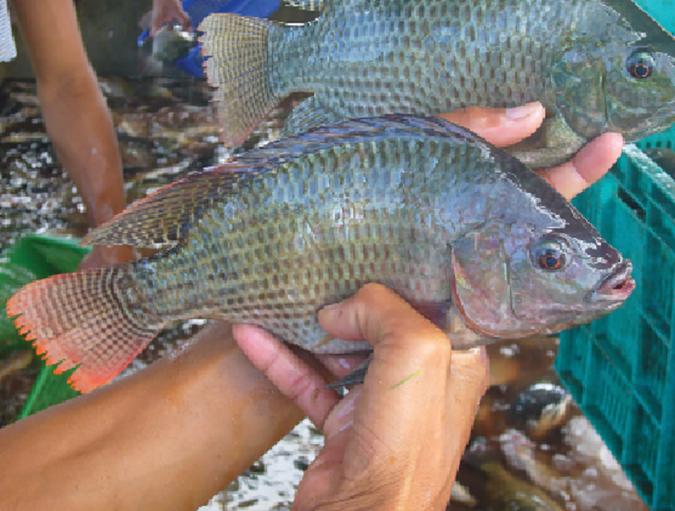
Health & Welfare
Dietary acidification in aquaculture
Much of the chemical breakdown of foodstuffs begins in the stomachs of animals through acidification. Effective use of digestive biology is a goal in aquaculture, so dietary acidifiers have been gaining interest in recent years.
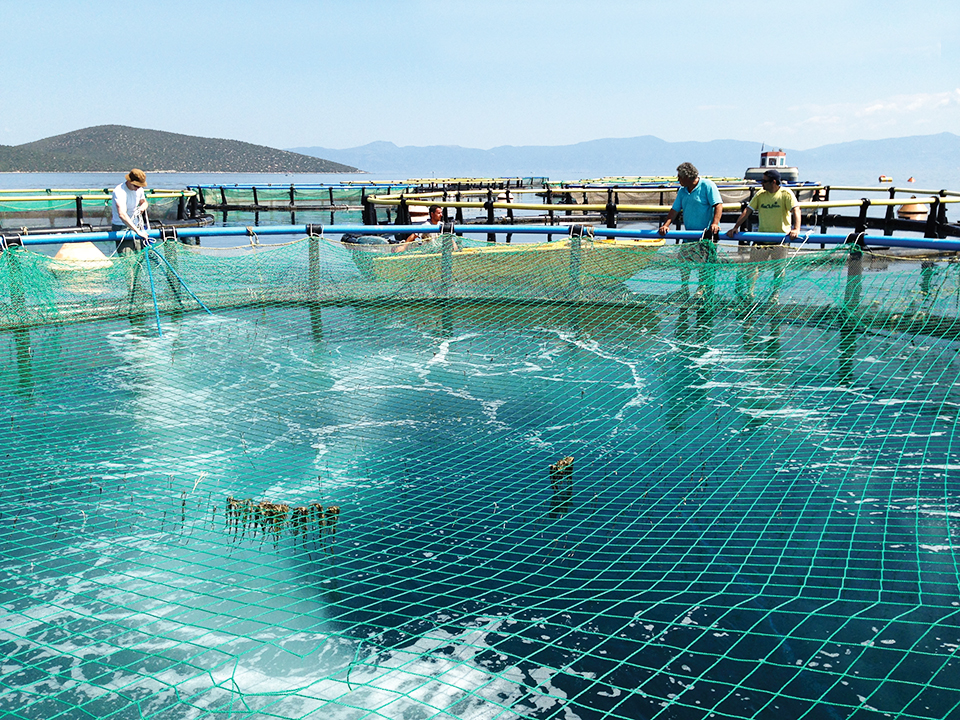
Health & Welfare
Diffused-air system improves oxygen levels in sea cage culture
Traditional sea cage culture typically relies on natural water exchange to replace oxygen consumed by fish, which may not provide sufficient oxygen – especially during seasonal periods of high temperature.


